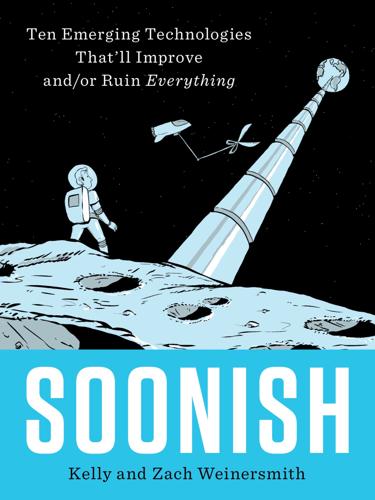
Soonish: Ten Emerging Technologies That'll Improve And/or Ruin Everything
by
Kelly Weinersmith
and
Zach Weinersmith
Published 16 Oct 2017
Imagine if every time you wanted to buy a meatball sub, you had to write a sonnet to the nice lady slinging cheese at Subway. This thou perceiv’st, which makes thy love more strong: Toast not the bread, for I must leave ere long. Historically, which markets are more money driven and which are more match driven has been sociological, with different cultures working it out in their own way. Dr. Alvin Roth (Nobel Prize–winner and author of Who Gets What—and Why) at Stanford invokes the concept of “repugnance” to explain why many markets are match driven. For cultural reasons, and perhaps biological reasons, many transactions are considered to be, well, repugnant when money comes into play. Adopting a child is okay.
…
Many of these experts were kind enough to read their relevant sections of the book, or (in a few cases) the whole damn thing. We thank Aysegul Gunduz, Gerwin Schalk, Eric Leuthardt, Beth Shapiro, George Church, Joff Silberg, Pamela Silver, Ramon Gonzalez, Marcela Maus, Steven Keating, Kirstin Matthews, Daniel Wagner, John Mendelsohn, Sandeep Menon, Jordan Miller, Gabor Forgacs, Alvin Roth, Erik Demaine, Cynthia Sung, Skylar Tibbits, Serena Booth, Alan Craig, Caitlin Fisher, Gaia Dempsey, Jonathan Ventura, Justin Werfel, Kirstin Petersen, Christopher Willis, Behrokh Khoshnevis, Richard Hull, Daniel Brunner, Bruce Lipschultz, Alex Wellerstein, Robert Kolasinski, Margaret Harding, Per Peterson, Jessica Lovering, Jason Derleth, Ron Turner, Michel van Pelt, Phil Plait, Daniel Faber, James Hansen, Martin Elvis, Karen Daniels, Steven Munger, Bryan Caplan, Noah Smith, Inna Vishik, Kevin Ringelman, John Timmer, Jonathan Dowling, Alan Winfield, Andrew Reece, Jeffrey Lipton, David White, Aindrila Mukhopadhyay, Sridhar Ramesh, Gerhard Schall, Nick Matteo, Cin-Ty Lee, Dana Glass, Omar Renteria, Javier Omar Garcia, Greg Lieberman, Brian Pickard, Michael Johnson, Scott Egan, Scott Solomon, Paul Robinette, Patricia Smith, Martin Weiner, Alexander Roederer, Rick Karnesky, Rhett Allain, Alexander Bolonkin, Lloyd James, James Lloyd, Ann Chang, Sean Leonard, Scott Aaronson, Rosemary Mosco, Aaron Sabolch, Joe Batwinis, Emily Lakdawalla, Steven Cavins, Jacob Stump, Linda Novitski, James Ashby, Ian McNab, Jennifer Drummond, James Cropcho, Daniela Rus, Kurt Schwenk, Chad Jones, James Redfearn, Kevin Berry, and Richard Prenzlow.
…
., and Rus, D. “M-Blocks: Momentum-Driven, Magnetic Modular Robots,” 4288–95. IEEE/RSJ International Conference on Intelligent Robots and Systems, Piscataway, N.J.: IEEE Publishing, 2013. Rose, David. Enchanted Objects: Innovation, Design, and the Future of Technology. New York: Scribner, 2015. Roth, Alvin E. Who Gets What—and Why: The New Economics of Matchmaking and Market Design. Boston: Eamon Dolan/Mariner Books, 2016. Rubenstein, M. “Emissions from the Cement Industry.” State of the Planet. Earth Institute. Columbia University. May 9, 2012. blogs.ei.columbia.edu/2012/05/09/emissions-from-the-cement-industry.
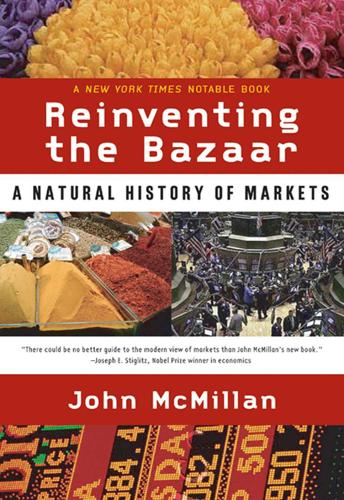
Reinventing the Bazaar: A Natural History of Markets
by
John McMillan
Published 1 Jan 2002
“Labor Markets in Professional Sports.” Economic Journal 111, 47–68. Roth, Alvin E. 1984. “The Evolution of the Labor Market for Medical Interns and Residents.” Journal of Political Economy 92, 991–1016. ————. 1996. “Report on the Design and Testing of an Applicant Proposing Matching Algorithm, and Comparison with the Existing NPRM Algorithm.” www.economics.harvard.edu/~aroth/phase1.html. Roth, Alvin E., and Ockenfels, Axel. 2000. “Last Minute Bidding and the Rules for Ending Second-Price Auctions.” Unpublished, Harvard University, Cambridge. Roth, Alvin E., and Peranson, Elliot. 1999. “A Redesign of the Matching Market for American Physicians: Some Engineering Aspects of Economic Design.”
…
A hospital and an intern reaching an early deal did not take account of the costs they were imposing on the other hospitals and interns. A hospital that decided to wait and see how candidates developed risked losing them to other hospitals. The hospitals eventually designed some rules for the marketplace, with the help of economist Alvin Roth.15 Now, each intern is given a list of hospitals and ranks them in order of preference. Similarly, each hospital ranks the interns. These rankings are loaded into a computer program, which computes the match of interns to hospitals, going as far as is feasible toward meeting the preferences of both the interns and the hospitals.
…
“A Redesign of the Matching Market for American Physicians: Some Engineering Aspects of Economic Design.” American Economic Review 89, 748–780. Roth, Alvin E., Prasnikar, Vesna, Okuno-Fujiwara, Masahiro, and Zamir, Shmuel. 1991. “Bargaining and Market Behavior in Jerusalem, Ljubljana, Pittsburgh, and Tokyo: An Experimental Study.” American Economic Review 81, 1068–1095. Rothschild, Michael, and Stiglitz, Joseph E. 1976. “Equilibrium in Competitive Insurance Markets: An Essay on the Economics of Imperfect Information.” Quarterly Journal of Economics 90, 629–650. Rozelle, Scott, Zhang, Linxiu, and Huang, Jikun. 1999.
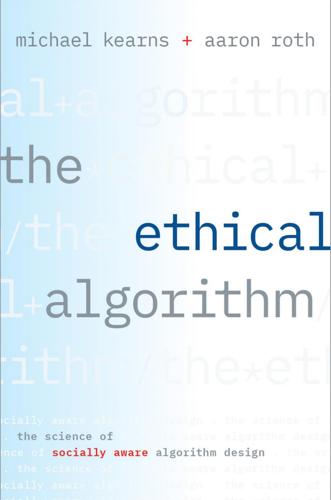
The Ethical Algorithm: The Science of Socially Aware Algorithm Design
by
Michael Kearns
and
Aaron Roth
Published 3 Oct 2019
While there are many details that make this problem more complicated than medical residency matching, there are again practical, scalable algorithms that maximize the efficiency of the solution found, where here efficiency means maximizing the total number of compatible transplants that occur globally—ideally across all hospitals, not just within a single one. For his algorithmic and game-theoretic insights on this problem (and the others we have mentioned, including the medical residency match) and his efforts to convince the medical community and hospitals that it was worth the effort to pool their transplant donors, recipients and data, Alvin Roth was awarded the 2012 Nobel Prize in economics—along with the aforementioned Lloyd Shapley, whose early work initiated the era of algorithmic matching. Algorithmic Mind Games We’ve now seen a variety of modern settings (and potentially future ones, such as self-driving cars) in which game-theoretic modeling can provide both conceptual guidance and algorithmic prescriptions to problems in which a large number of individuals or institutions have complex and potentially competing preferences.
…
Many thanks to Joellyn Ausanka of OUP for her expert handling of the production process. We thank Eric Henney of Basic Books for his early encouragement of this project and our agent, Jim Levine, for helping us navigate the Byzantine world of trade publishing. We are grateful for comments on early drafts from Thomas Kearns, Yuriy Nevmyaka, Alvin Roth, and Ben Roth. Even though both of us are many years past our doctoral studies, we were deeply and forever influenced by the outstanding guidance of our own dissertation advisors, Avrim Blum (AR) and Les Valiant (MK). A transition every graduate student in our research areas must make is that from merely solving given problems to choosing one’s own projects and to developing research “taste”—deciding what’s important to work on from a broader, nontechnical perspective.
…
See also precise specification goal racial data and bias and algorithmic violations of fairness and privacy, 96 and college admissions models, 77 and dating preferences, 94–97 and “fairness gerrymandering,” 86–89 and fairness issues in machine learning, 65–66 and forbidden inputs, 66–67 and Google search, 14–15 and lending decisions, 191 and scope of topics covered, 19 and unique challenges of algorithms, 7 RAND Corporation, 100 randomization and differential privacy, 36–37, 40–44, 47 random lending, 69–71 random sampling, 18–19, 40 and self-play in machine learning, 131–32 and trust in data administrators, 45–47 rare events, 144 regulation of data and algorithms. See laws and regulations reidentification of anonymous data, 22–31, 33–34, 38 relationship status data, 51–52 religious affiliation data, 51–52 reproducibility (replication) crisis, 19–20, 156–60 residency hiring, 126–30 resume evaluation, 60–61 Rock-Paper-Scissors, 99–100, 102–3 Roth, Alvin, 130 RuleFit algorithms, 173 runs on banks, 95–96 sabotage, 99–100 Sandel, Michael, 177–78 SAT tests and fairness vs. accuracy of models, 65, 74–80 and predictive modeling, 8 and word analogy problems, 57 and word embedding models, 59–60 scale issues, 139, 143–45, 192. See also adaptive data analysis scams, 137–41 Schelling, Thomas, 98 scientific research and literature and adaptive data analysis, 159–65 game theoretical view of, 136 and generative adversarial networks, 135 on harms caused by algorithms, 14–15 image recognition competition, 145–49 “power pose” research, 141–43 scale and adaptivity issues, 143–45 and scope of topics covered, 19–20 and torturing data, 156–59 and weaknesses of aggregate data, 31 search engines, 61–62 selective reporting of performance, 140–41, 149 self-driving cars, 112, 174–77, 180 selfishness and self-interest and dating apps, 95–96 and equilibrium states, 98–99 and game theory, 97–98 and navigation problems, 105–6 selfish equilibrium, 110–11, 113, 115, 123 and traffic optimization problems, 105–6, 108–9 self-play in machine learning, 131–34 self-programming, 6.
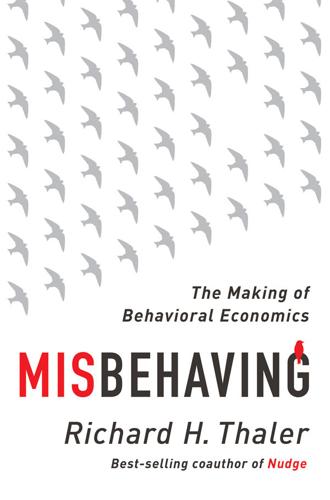
Misbehaving: The Making of Behavioral Economics
by
Richard H. Thaler
Published 10 May 2015
Most European countries (as well as Canada) provide health care to their citizens as a basic right, and even in America, where this view is resisted in certain quarters, we do not turn uninsured accident victims away at the emergency room. Similarly, no country permits a free market in organs, although Iran does have a market for kidneys. For most of the world, the idea that a rich person who needs a kidney should be allowed to pay a poor person to donate one is considered “repugnant,” to use the word favored by economist Alvin Roth to describe such market transactions. In many situations, the perceived fairness of an action depends not only on who it helps or harms, but also on how it is framed. To test these kinds of effects, we would ask two versions of a question to different groups of respondents. For example, consider this pair of questions, with the differences highlighted in italics: A shortage has developed for a popular model of automobile, and customers must now wait two months for delivery.
…
Economists need to adopt as nuanced a view of human nature as the farmers. Not everyone will free ride all the time, but some people are ready to pick your pocket if you are not careful. I keep a photograph of one of those farm stands in my office for inspiration. 16 Mugs At some point during the Vancouver year, the economist Alvin Roth, who was then deeply involved with experimental methods, organized a conference at the University of Pittsburgh. The goal was to present the first drafts of papers that would later be published in a small book called Laboratory Experimentation in Economics: Six Points of View. The contributors were major figures in the experimental economics community including Al, Vernon Smith, and Charlie Plott.
…
Evidence from Professional Football.” Journal of Political Economy 114, no. 2: 340–65. Ross, Lee, David Greene, and Pamela House. 1977. “The ‘False Consensus Effect’: An Egocentric Bias in Social Perception and Attribution Processes.” Journal of Experimental Social Psychology 13, no. 3: 279–301. Roth, Alvin E. 2007. “Repugnance as a Constraint on Markets.” Journal of Economic Perspectives 21, no. 3: 37–58. ———, ed. 1987. Laboratory Experimentation in Economics: Six Points of View. Cambridge, UK: Cambridge University Press. Rozeff, Michael S., and William Kinney. 1976. “Capital Market Seasonality: The Case of Stock Returns.”

Platform Revolution: How Networked Markets Are Transforming the Economy--And How to Make Them Work for You
by
Sangeet Paul Choudary
,
Marshall W. van Alstyne
and
Geoffrey G. Parker
Published 27 Mar 2016
These are endemic in network markets, since, as we’ve seen when examining network effects, the spillover benefits users generate are a source of platform value. Understanding this forces a shift in corporate governance from a narrow focus on shareholder value to a broader view of stakeholder value. Market designer and Nobel Prize-winning economist Alvin Roth described a model of governance that uses four broad levers to address market failures.19 According to Roth, a well-designed market increases the safety of the market via transparency, quality, or insurance, thereby enabling good interactions to occur. It provides thickness, which enables participants from different sides of a multisided market to find one another more easily.
…
Zopa responded by publicizing the fact that its loan default rate had fallen to 0.2 percent from 0.6 percent three years earlier.34 Such is the power of well-designed platform architecture. Architecture can also be used to prevent and correct market failures. Recall the middlemen on eBay who took advantage of seller misspellings. Although one might lament the lost opportunity for the hapless sellers to complete the deal, these middlemen provided market liquidity (“thickness” in Alvin Roth’s formulation) through the process known as arbitrage. If no one bids on misspelled items, the interaction never happens—so arbitrageurs can be viewed as providing a valuable service. Yet the existence of arbitrage opportunities also highlights market inefficiencies. eBay now uses automated systems to provide spelling assistance, so sellers can have more confidence that they’ll receive what their items are worth.
…
., 245–46 rate of conversion to sale, 197 ratings, 157–58, 265 razors-and-blades strategy, 109–10 Real Audio, 222 real estate market, 9, 12, 62, 124, 237, 277, 282 RealNetworks, 222 real-time processing, 247, 252–53 recipients, 100, 101, 104, 105 recruiters, 50, 51, 119, 218–19 redBus, 73, 95 Reddit, 5, 36, 47, 93, 173 Regulation 2.0, 253–56 regulatory capture, 235–37, 257 RelayRides, 9, 10, 67, 230 research and development (R & D), 14, 33, 275 reservations, 8–9, 90, 95, 101, 137, 142, 194 resources: allocation of, 6, 15, 70–71, 199, 200, 298–99 control of, 208–9, 212, 227 intensive use of, 263–64, 278, 289 model based on, 208–10, 213, 216 restaurants, 36, 37, 76, 90, 91, 95, 101, 113, 120, 142, 170, 194, 259 retail industry, 12, 63, 77, 82–83, 85, 89, 111, 123–24, 141, 145, 157–58, 204–7, 240–49, 251, 264 revenue grabs, 121, 157–58 rewards (incentives), 82, 101, 102, 166, 173–74, 182, 227 R/GA, 76 ride-sharing services, 2, 9, 12, 16–18, 25, 30, 36, 37, 49–50, 60–62, 67, 115, 175, 190, 227, 231, 233, 250–54, 258–59, 264, 278, 287, 297 Ries, Eric, 199, 201–2 Rifkin, Jeremy, 286 Roman military campaigns, 183, 237 Roth, Alvin, 164, 171 royalties, 72, 122 Rudder, Christian, 26–27 Sacks, David, 17, 18 Safaricom, 277–78 safety net, 280–81, 288 Saks Fifth Avenue, 275 sales conversion rate, 191–92 Salesforce, x, 55, 145, 245–46, 267 sales forces, 42–44, 73–74, 91, 125, 145 sales tax, 248–49 same-side effects, 29–32, 34, 298 Samsung, xi, 86, 137, 270–71, 295 San Francisco, 1–2, 18, 61, 233, 278, 281–83 SAP, vii, x, 155, 173–75, 216, 219, 241 scrapers (automated software), 91–92, 107 search engine optimization, 120–21, 145, 191, 297 search engines, 24–25, 40, 120–21, 145, 190, 191, 197–98, 215, 216, 242, 297 Sears, Roebuck, 207 seeding strategy, 18, 92–93, 105 self-driving cars, 62 self-governance, 176–80, 182, 246, 253–56 self-serve advertising, 131, 133–34 semiconductor industry, 225 senders, 100, 101–2, 105 sensor data, 246, 286 service interfaces, 176–78, 221 Shapiro, Carl, 19, 240–41 shared model, 137, 138, 140–41, 154–55 shareholders, 11, 164 sharing economy, 10, 298–99 Shleifer, Andrei, 236–37, 238 shopping malls, 123–24 ShopRunner, 206–7 ShopThis!

Reinventing Capitalism in the Age of Big Data
by
Viktor Mayer-Schönberger
and
Thomas Ramge
Published 27 Feb 2018
The goal is to produce as many suitable matches as possible. This sort of matching, too, has recently improved significantly, thanks to enhanced algorithms and a better understanding of which matching algorithm works best for which type of market. In 2012, two of the world’s leading experts in matching, Lloyd Shapley and Alvin Roth, were awarded the Nobel Prize in economics for their theories on the subject. For transactions with huge externalities, data-rich markets could utilize a similar approach; and the richness of their data streams would facilitate the sophisticated matching that needs to be done by the clearinghouse.
…
See automation/machine learning Mainichi Shimbun, 109 Malone, Thomas, 7 MAN, 182 market failure, reducing, 6 markets, 35–57 Amazon as, 87–88 chaotic, unplanned nature of, 160 choice limitations in, 13–14 communicative coordination and, 26–28, 30–33 comparison of firms and, 28, 111 competition between firms and, 30, 107 concentrated, 161–169, 171, 217 data-rich (see data-rich markets) decentralization in (see decentralization) feedback effects and, 160–175 fintechs and, 153 historical improvements in, 51–52 irrational decision-making in, 42–44 key difference between firms and, 32–33, 90 limitations of, 63 network effects and, 162–166 for noneconomic activities, 49–50 physical design of, 160–161 prediction, 50–51 resilience of, 39 scale effects and, 162–166 shift from firms to, 10–11, 30–32, 125–126 success of, 4, 49–50, 222 thick, 2, 82–83, 164, 213 Martin, Walt, 181–182 Marx, Karl, 143, 162 Mason, Vicki, 42 Massachusetts Institute of Technology (MIT), 7, 142, 159, 184, 195, 220 matching, 8–9, 11, 64, 66, 71–85, 212 algorithms for (see algorithms) centralized, 74 complexity of task, 43–44 in conventional vs. data-rich markets, 70–71 decentralized, 74, 127 fintechs and, 151–152 firms and, 127–129 nonmarket providers of, 75–76 variety of contexts for, 74–75 Max Planck Institute for Human Development, 105 McAfee, Andrew, 184 McDonald’s, 215 McGovern, George, 190 McNamara, Robert, 99–100 Medici, Cosimo de’ the Elder, 92, 93 Medici family, 91, 93 Mercedes-Benz, 110 Merrill, Douglas, 151 Merrill Lynch, 155 metadata, 66 Micro Ventures, 152–153 Microsoft, 165, 166, 169 Microsoft Imagine Cup, 75 Minyons club, 17–20 mobile phones iPhone, 136, 164 Kerala fishermen and, 36–37 payment business and, 147 Model T Ford, 29, 98, 162 money, 4, 45–57, 63, 64, 143–144, 212 advantages of using, 45–49 banks’ decreased use of, 136–137 data as a substitute for, 148–149 future role of, 5, 149 historical forms of currency, 47–48 importance of linked to utility, 45 informational function of, 48–49 intrinsic value not required for, 48 market efficiency improved by, 47–49 move from physical to virtual, 48 role of capital affected by demise of, 141 signaling with, 142 work unbundled from, 203–206, 218 See also capital; price monopolies, 30, 203 moon landing, 22, 159 Mosaic, 189 motorcycle manufacturing, 30–32, 33 Musk, Elon, 78, 189 My Years with General Motors (Sloan), 99 MySpace, 166 NASDAQ Composite Index, 196 National Aeronautics and Space Administration (NASA), 22 national champions, 30 National Oceanic and Atmospheric Administration, 133 negative income tax, 190 Netflix, 74, 75, 161, 196, 209 Netherlands, 191 network effects, 162–166 New York Central Railroad, 96 New York Times, 88–89, 208–209 Nixon, Richard, 190 Nobel Prize winners, 39, 74, 190 nominal tax rate, 198 Nordstrom, 211 Northwestern University, 83, 194 oligopolies, 30 Omidyar, Pierre, 1 ontology, 67–70, 81, 84, 136 defined, 67 firms and, 128 labor market and, 204 Organization for Economic Cooperation and Development (OECD) countries, 28 organized labor, 205 Orwell, George, 179 Otto, 181–183 Paine, Thomas, 190 Parthenon Group, 207 participatory policy measures, 186, 188–189, 190, 193, 200–202 patent system, 199 payment solutions businesses, 146–147, 149 PayPal, 135–136, 146, 189 Pearson, 69 Peep Trade, 76, 152 peer-to-peer lending, 152–153 Pentland, Sandy, 142 Peruzzi family, 91 Piketty, Thomas, 186 Pinterest, 210 poker, 59–62 populism, 13, 186 post-price retailers, 209 prediction markets, 50–51 preferences complexity of processing, 43–44 fintech extraction of, 151–152 improved means of capturing, 8, 64, 71–72, 76–81 standard language for comparing, 64 See also matching price, 7, 45–57 data-rich markets’ advantages over, 70–71, 72, 136–137 deemphasis on, 3, 122, 129, 136–137, 138, 212 detailed information lacking in, 4, 52–56 future role of, 5 information condensed by, 4, 46–47, 48–49, 63, 65 internal talent management and, 128 markets and, 36 volatility of, 36 PriceBlink, 52 PriceGrabber, 52 PriOS, 115 privacy issues, 145, 174 Procter & Gamble, 128 profits, 195–197 progressive consumption tax (PCT), 198 progressive data-sharing mandate, 12, 171, 199, 203 choice expanded by, 217 explained, 167–169 Prüfer, Jens, 167 punch-card tabulator, 96 Qin, Emperor, 24 Rack Habit, 207–208 Rawls, John, 223 regulatory measures for banks and financial institutions, 139–140 for feedback problems, 171–175 research and development, 196 resource scarcity, overcoming, 220–221 retail sector, 138, 207–212 retirement savings, 143–144, 195 returns on investments, 195 Robinhood Markets, 146 robo tax, 186–187 Rognlie, Matthew, 194 Ron, Lior, 182–183 Roth, Alvin, 74 Ryanair, 112 Saberr, 75 salary bands, 128, 129 salt (as currency), 47 Samsung, 196 Sandholm, Tuomas, 60, 62 SAP, 100 scale effects, 162–166 Scania, 182 Schottmüller, Christoph, 167 Schumpeter, Joseph, 120 scientific management, 96 Second Payment Service Directive (European Union), 140 Seedcamp, 75 self-employment, 185–186 Shapley, Lloyd, 74 Shepherd, Alistair, 75 shipping industry, 213 SigFig, 3, 151–152, 153, 156 silver standard, 48 Simon, Herbert, 104 Simon, Julian, 220 Siri, 79, 164 Six Sigma, 112 Sloan, Alfred P., 98–99, 101 Sloan School of Business, 220 Smith, Adam, 27, 143, 223 Snapchat, 166 Social Security, 192 SoFi, 150, 151 Soll, Jacob, 91 Solomon, Madi, 69–70 SOP.
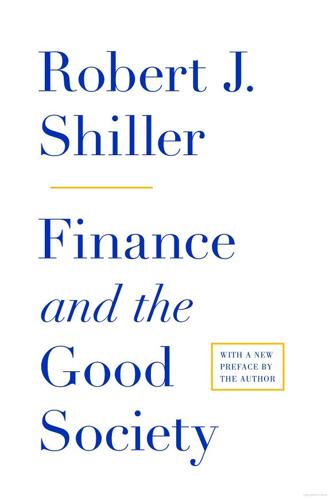
Finance and the Good Society
by
Robert J. Shiller
Published 1 Jan 2012
In so doing they are humanizing nance and making it more relevant to human welfare. Sometimes these people are called nancial engineers, since what they do seems analogous to what mechanical or electrical engineers do. At their best, market designers have the same practical common sense and drive to create, and the same grasp of basic science, that successful engineers have. Alvin Roth is a professor specializing in market design in the Economics Department at Harvard University. One of his most notable achievements was constructing a simple market for kidney transplants. Many thousands of people in need of a transplant die each year for failure to nd a suitable donor. The problem has been that few people would volunteer to donate a kidney: the operation is painful and the result may pose complications.
…
“The Evolutionary Psychology of Facial Beauty.” Annual Review of Psychology 57:199–226. Ross, Lee. 1977. “The Intuitive Psychologist and His Shortcomings: Distortions in the Attribution Process.” Advances in Experimental Social Psychology 10:173–220. Ross, Stephen A. 1976. “Options and E ciency.” Quarterly Journal of Economics 90(1):75–89. Roth, Alvin E., Tayfun Sonmez, and M. Utku Unver. 2005. “Pairwise Kidney Exchange.” Journal of Economic Theory 125(2):151–88. Russett, Bruce, and John Oneal. 2001. Triangulating Peace: Democracy, Interdependence and International Organizations. New York: W. W. Norton. Saint-Exupéry, Antoine de. 2000 [1943].
…
See also speculation Ritschl, Albrecht, 158 RMBSs. See residential mortgage–backed securities Rockefeller, John D., Sr., 105, 164–65 Rockefeller family, 164–65 Rogoff, Kenneth, 2 Rome, ancient, 39, 144, 147, 178 Romney, George, 22 Roosevelt, Franklin D., 109, 202, 210, 212–13, 233–34 Roosevelt family, 234, 256n7 Ross, Stephen A., 78 Roth, Alvin, 69–70 Rubin, Jerry, 137–38 Russett, Bruce, 228–29 Russia: dating services, 74; economic change in, 2, 3; perceptions of businesspeople, 166. See also Soviet Union Saint-Exupéry, Antoine de, The Little Prince, 124–25 salaries. See executive compensation; rewards salespeople, financial, 80, 85, 97, 235 Samuelson, Paul A., 185 Sarkozy, Nicolas, 2 Saverin, Eduardo, 49 Save the Children, 200 savings: encouraging, 214; lottery-linked, 177; rates of, 153–54; retirement, 214 savings banks, 44 SBA.
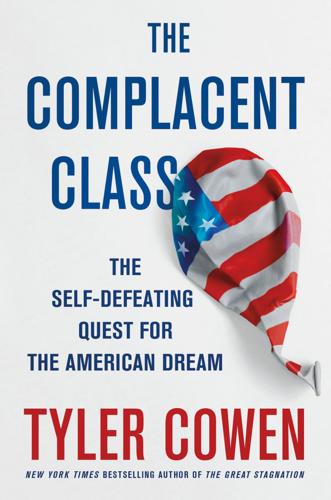
The Complacent Class: The Self-Defeating Quest for the American Dream
by
Tyler Cowen
Published 27 Feb 2017
Matching probably has improved in the middle tiers of the market and at the bottom, even if not many people can be matched to the very top in terms of quality. There is some evidence that patients are better matched to their hospitals over time, and in a way that is bringing slight improvements in life expectancy.19 Some of the benefits from better matching in health care and education are not apparent at first glance. Alvin Roth, an experimental economist now at Stanford University, won a Nobel Prize in part for using economic theory to come up with better algorithms for matching, and these methods are supposed to be robust across many realms in a quite general sense. His Nobel Prize was an especially deserved one, as it reflects the spirit of our times more than was recognized in 2012, the year he won.
…
See Affordable Care Act Occupy Wall Street movement oil industry oil price shock (1973) On the Road (Kerouac) outsourcing pantheism Pareto, Vilfredo patents Patriot Act pets philanthropy Pinker, Steven Pissarides, Christopher play, outdoor polarization policing political science poverty and mobility and segregation Princeton University prison riots productivity and cities diffusion problem firm-specific productivity and innovation and the internet and matching and mobility productivity per worker hour total factor productivity (TFP) worker productivity profiling progress and the Complacent Class and democracy and innovation and mobility model of history and segregation progressivism protests. See social protests and riots Putin, Vladimir Putnam, Robert D. R&D (research and development) race relations racism Rauch, Jonathan Reagan, Ronald Reformation, Protestant regional specialization Republican Party riots. See social protests and riots Roeder, Oliver Roth, Alvin Russia. See also Soviet Union S&P 500 safety and security Samuelson, Paul Sanders, Bernie Schwartz, Barry Second World War security. See safety and security segregation and college towns by education and culture by income and matching by race by social class Seinfeld (sit-com) Selma to Montgomery marches September 11, 2001 sexuality.
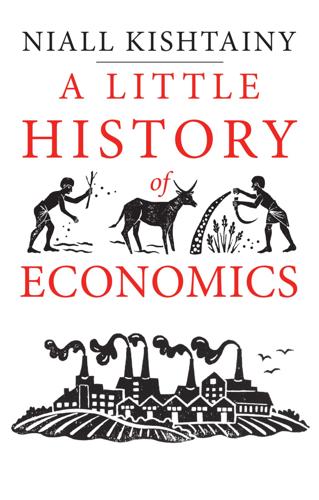
A Little History of Economics
by
Niall Kishtainy
Published 15 Jan 2017
Doctors decide which patients will benefit from transplants and then try to find them suitable donors, but patients often have to wait a long time. In the United States in 2006, 70,000 patients were waiting for kidneys but fewer than 11,000 transplants were carried out and 5,000 people died or became too sick to have one. The American economist Alvin Roth (b. 1951) used economic principles to come up with a way of increasing the number of organs available for transplant without people buying and selling them. Roth’s solution is based on the fact that humans have two kidneys but can survive on a single one, so if your brother needed a kidney you might decide to give him one of yours.
…
(i), (ii) Kerala (India) (i) Keynes, John Maynard (i), (ii), (iii), (iv), (v), (vi) Keynesian theory (i), (ii), (iii) Klemperer, Paul (i) Krugman, Paul (i), (ii) Kydland, Finn (i), (ii) labour (i) in ancient Greece (i) and market clearing (i) women as unpaid (i) labour theory of value (i), (ii) laissez-faire (i) landowners (i), (ii), (iii) Lange, Oskar (i) law of demand (i), (ii) leakage of spending (i) Lehman Brothers (i) leisure class (i) leisured, women as (i) Lenin, Vladimir Ilyich (i), (ii) Lerner, Abba (i) Lewis, Arthur (i) Lincoln, Abraham (i) List, Friedrich (i) loss aversion (i) Lucas, Robert (i), (ii) MacKay, Charles (i) Macmillan, Harold (i) macro/microeconomics (i) Malaysia, and speculators (i) Malthus, Thomas (i), (ii), (iii) Malynes, Gerard de (i), (ii) manufacturing (i), (ii) division of labour (i) see also Industrial Revolution margin (i) marginal costs (i), (ii) marginal principle (i), (ii), (iii) marginal revenue (i) marginal utility (i), (ii) market, the (i) market clearing (i) market design (i) market failure (i), (ii), (iii), (iv) ‘Market for Lemons, The’ (Akerlof) (i) market power (i) markets, currency (i), (ii) Marshall, Alfred (i), (ii), (iii), (iv), (v) Marx, Karl (i), (ii), (iii), (iv), (v), (vi), (vii) Marxism (i) mathematics (i), (ii), (iii) means of production (i) mercantilism (i), (ii) Mesopotamia (i) Mexico, pegged currency (i) micro/macroeconomics (i) Microsoft (i) Midas fallacy (i) minimum wage (i) Minsky, Hyman (i) Minsky moment (i), (ii) Mirabeau, Marquis de (i), (ii), (iii) Mises, Ludwig von (i), (ii), (iii), (iv) mixed economies (i), (ii) Mobutu Sese Seko (i) model villages (i) models (economic) (i), (ii), (iii), (iv) modern and traditional economies (i), (ii) monetarism (i) monetary policy (i), (ii) money (i), (ii), (iii), (iv), (v), (vi) see also coins; currency money illusion (i) money wages (i) moneylending see usury monopolies (i), (ii) monopolistic competition (i), (ii) monopoly, theory of (i) monopoly capitalism (i), (ii), (iii) monopsony (i) moral hazard (i), (ii) multiplier (i) Mun, Thomas (i), (ii), (iii) Muth, John (i) Nash, John (i), (ii) Nash equilibrium (i) national income (i), (ii), (iii), (iv), (v) National System of Political Economy (List) (i) Nelson, Julie (i) neoclassical economics (i) net product (i) Neumann, John von (i) New Christianity, The (Saint-Simon) (i) new classical economics (i) New Harmony (Indiana) (i) New Lanark (Scotland) (i) Nkrumah, Kwame (i), (ii) non-rival good (i) Nordhaus, William (i), (ii) normative economics (i), (ii) Obstfeld, Maurice (i) Occupy movement (i) oligopolies (i) opportunity cost (i), (ii) organ transplant (i) output per person (i) Owen, Robert (i) paper money (i), (ii) Pareto, Vilfredo (i) pareto efficiency (i), (ii) pareto improvement (i) Park Chung-hee (i) partial equilibrium (i) pegged exchange rate (i) perfect competition (i), (ii), (iii), (iv), (v) perfect information (i) periphery (i) phalansteries (i) Phillips, Bill (i) Phillips curve (i), (ii), (iii), (iv), (v), (vi), (vii) physiocracy (i), (ii) Pigou, Arthur Cecil (i), (ii), (iii) Piketty, Thomas (i), (ii), (iii) Plato (i), (ii), (iii) policy discretion (i) Ponzi, Charles (i) Ponzi finance (i) population and food supply (i), (ii), (iii) of women (i) positive economics (i) poverty (i), (ii), (iii), (iv), (v) in Cuba (i) Sen on (i) and utopian thinkers (i) Prebisch, Raúl (i) predicting (i) Prescott, Edward (i), (ii) price wars (i), (ii) primary products (i) prisoners’ dilemma (i) private costs and benefits (i) privatisation (i) productivity (i), (ii), (iii) profit (i), (ii), (iii), (iv) and capitalism (i), (ii) proletariat (i), (ii) property (private) (i), (ii), (iii), (iv), (v) and communism (i), (ii), (iii), (iv) protection (i), (ii), (iii) provisioning (i) public choice theory (i) public goods (i) quantity theory of money (i) Quesnay, François (i) Quincey, Thomas de (i), (ii) racism (i) Rand, Ayn (i) RAND Corporation (i), (ii) rate of return (i), (ii) rational economic man (i), (ii), (iii), (iv), (v) rational expectations (i), (ii), (iii), (iv), (v) real wages (i), (ii), (iii) recession (i) and governments (i), (ii), (iii) Great Recession (i) Keynes on (i), (ii) Mexican (i) redistribution of wealth (i) reference points (i) relative poverty (i) rent on land (i), (ii), (iii) rents/rent-seeking (i) resources (i), (ii) revolution (i), (ii), (iii), (iv) Cuban (i) French (i), (ii), (iii), (iv) Russian (i), (ii) Ricardo, David (i), (ii), (iii) risk aversion (i) Road to Serfdom, The (Hayek) (i) robber barons (i) Robbins, Lionel (i) Robinson, Joan (i) Roman Empire (i) Romer, Paul (i) Rosenstein-Rodan, Paul (i) Roth, Alvin (i), (ii) rule by nature (i) rules of the game (i) Sachs, Jeffrey (i) Saint-Simon, Henri de (i) Samuelson, Paul (i), (ii) savings (i), (ii) and Say’s Law (i) Say’s Law (i) scarcity (i), (ii), (iii), (iv), (v), (vi) Schumpeter, Joseph (i), (ii) sealed bid auction (i) second price auction (i) Second World War (i) securitisation (i) self-fulfilling crises (i) self-interest (i) Sen, Amartya (i), (ii) missing women (i), (ii), (iii) services (i) shading bids (i), (ii) shares (i), (ii), (iii), (iv), (v), (vi) see also stock market Shiller, Robert (i), (ii) signalling (i) in auctions (i) Smith, Adam (i), (ii), (iii), (iv), (v) social costs and benefits (i) Social Insurance and Allied Services (Beveridge) (i) social security (i), (ii) socialism (i), (ii), (iii), (iv), (v) socialist commonwealth (i) Socrates (i) Solow, Robert (i) Soros, George (i), (ii), (iii) South Africa, war with Britain (i) South Korea, and the big push (i) Soviet Union and America (i) and communism (i), (ii) speculation (i) speculative lending (i) Spence, Michael (i) spending government (fiscal policy) (i), (ii), (iii), (iv), (v), (vi), (vii) and recessions (i), (ii) and Say’s Law (i) see also investment stagflation (i), (ii) Stalin, Joseph (i) standard economics (i), (ii), (iii), (iv) Standard Oil (i) Stiglitz, Joseph (i) stock (i) stock market (i), (ii), (iii), (iv), (v) stockbrokers (i) Strassmann, Diana (i), (ii) strategic interaction (i), (ii) strikes (i) subprime loans (i) subsidies (i), (ii) subsistence (i) sumptuary laws (i) supply curve (i) supply and demand (i), (ii), (iii), (iv) and currencies (i) and equilibrium (i), (ii) in recession (i), (ii), (iii) supply-side economics (i) surplus value (i), (ii) Swan, Trevor (i) tariff (i) taxes/taxation (i) and budget deficit (i) carbon (i) and carbon emissions (i) and France (i) and public goods (i) redistribution of wealth (i) and rent-seeking (i) technology as endogenous/exogenous (i) and growth (i) and living standards (i) terms of trade (i) Thailand (i) Thaler, Richard (i) theory (i) Theory of the Leisure Class, The (Veblen) (i) Theory of Monopolistic Competition (Chamberlain) (i) Thompson, William Hale ‘Big Bill’ (i) threat (i) time inconsistency (i), (ii) time intensity (i) Tocqueville, Alexis de (i) totalitarianism (i) trade (i), (ii), (iii) and dependency theory (i) free (i), (ii), (iii) trading permit, carbon (i) traditional and modern economies (i), (ii) transplant, organ (i) Treatise of the Canker of England’s Common Wealth, A (Malynes) (i) Tversky, Amos (i), (ii) underdeveloped countries (i) unemployment in Britain (i) and the government (i) and the Great Depression (i) and information economics (i) and Keynes (i) and market clearing (i) and recession (i) unions (i), (ii) United States of America and free trade (i) and growth of government (i) industrialisation (i) and Latin America (i) Microsoft (i) recession (i), (ii) and the Soviet Union (i) and Standard Oil (i) stock market (i) wealth in (i) women in the labour force (i) unpaid labour, and women (i) usury (i), (ii), (iii) utility (i), (ii), (iii), (iv) utopian thinkers (i), (ii) Vanderbilt, Cornelius (i), (ii) Veblen, Thorstein (i), (ii), (iii) velocity of circulation (i), (ii) Vickrey, William (i) wage, minimum (i) Walras, Léon (i) Waring, Marilyn (i) wealth (i) and Aristotle (i), (ii) and Christianity (i) Piketty on (i) and Plato (i) Smith on (i) Wealth of Nations, The (Smith) (i), (ii) welfare benefits (i), (ii), (iii), (iv) welfare economics (i) Who Pays for the Kids?
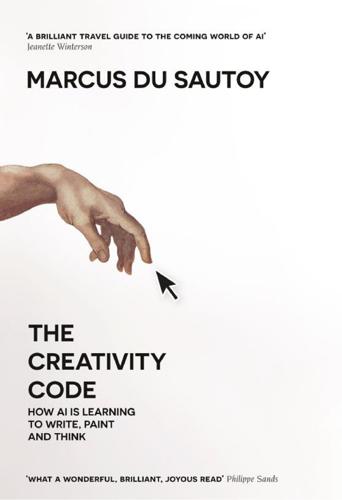
The Creativity Code: How AI Is Learning to Write, Paint and Think
by
Marcus Du Sautoy
Published 7 Mar 2019
The first algorithm to win its creators a Nobel Prize, originally formulated by two mathematicians, David Gale and Lloyd Shapley, in 1962, used a matching algorithm to solve something called ‘the Stable Marriage Problem’. Gale, who died in 2008, missed out on the award, but Shapley shared the prize in 2012 with the economist Alvin Roth, who saw the importance of the algorithm not just to the question of relationships but also to social problems including assigning health care and student places fairly. Shapley was amused by the award: ‘I consider myself a mathematician and the award is for economics,’ he said at the time, clearly surprised by the committee’s decision.
…
.: A Song of Ice and Fire/Game of Thrones 56, 120 Martinez, David 123 Maslon LLP 109 Massive Attack 226–8, 229 Mathematical Society of France 279 mathematics: AI and proving mathematical theorems 233–53; AI as threat to job of mathematician 5–7, 17, 43, 151–5, 233; algorithms, development of and 44–65, 45, 50, 51, 52, 58, 59, 60, 63; art and see art; art of 150–68; birth of 44–5; chess and see chess; complexity of, increasing 176–85; computers as partners in proving deep theorems 169–85; creativity and 3–4, 5, 7, 10, 12, 14, 15–16, 17, 18, 98, 150–2, 181–2; drugs and 181–2; Go and see Go; language and 269, 276, 278, 279–80, 284, 289, 291–3, 297; limits of human 176–80; music and see musical composition; narrative art of 241–53, 250; origins of 155–68; pattern recognition and 20–1, 155–6; proof, mathematical game of 152–5; proof, narrative quality of 245–50; proof, origins of 161–8; proof, social context of 182–3; pure and applied, separation of 182; recommender algorithms and 84–6, 85, 86, 89–90; surprise, element of and 248–50, 250; tales, generating new mathematical 291–3 Mayans 157 McCarthy, John 24 McEwan, Ian 306 McHugh, Tommy 133, 134 medieval polyphony 187, 189 MENACE (algorithm) 24 Messiaen, Olivier 90; Quartet for the End of Time 205 Métamatics 119 metric spaces 240–1 Metropolitan Police, British 77 Michie, Donald 2, 24 Microsoft 72, 73, 127, 131; Kinect/Xbox 72–6, 79, 81–2; Microsoft Research Cambridge 174–6; Rembrandt project 127–32 Millennium Prize Problems 152, 172 Minsky, Marvin 2 Mitchell, Kerry: ‘Fractal Art Manifesto’ 114 Mitsuku (chatbot) 258–9, 260 Mizar Mathematical Library 236–41, 244, 246, 253 Modus Ponens 162 Modus Tollens 162–3 Monbiot, George: Out of the Wreckage 296 Monet, Claude 10, 138 Monster Symmetry Group 10, 177 Morris, Desmond 107 Mozart, Wolfgang Amadeus 2, 3, 5, 10, 13, 194, 197, 198, 200, 227, 230, 231, 280; Musikalisches Würfelspiel 194–5 Muggleton, Stephen 291 Murray, Sean 116 muses 13–14 musical composition 185, 186–233; algorithms and composition, correlation between 186–9; Bach as first musical coder 189–94, 195, 197, 198, 200, 201, 205 see also Bach, Johann Sebastian; DeepBach and 207–12; Emmy and 195–207, 197, 199; MduS and 186–8; mathematics and 186–212, 214–18, 216, 217, 221, 222, 223, 230; Mozart’s Musikalisches Würfelspiel and 194–5; songwriting 213–32 see also songwriting; Turing Test and 200–2, 220–1 Musil, Robert 276 Musk, Elon 25 Namagiri 14 Nam June Paik 119 NaNoGenMo (National Novel Generation Month) 282–3 Narrative Science 293, 295 Naruto (macaque) 108–9 National Novel Writing Month 282 Nature 28, 152 Neanderthals 104, 231 Nees, Georg 110, 111–12, 113, 114, 117, 126 Nekrasov, Pavel 215, 217 Netflix 44, 83, 91, 135, 286; prize challenge 83–9, 85, 86, 91 neural networks 24, 27, 33, 68–70, 68, 70, 93–4, 272–3 new/novelty, creativity and 3, 4, 7–8, 12, 13, 16, 17, 40–3, 102–3, 109, 138–41, 140, 167–8, 238–9, 291–3, 299, 301 Newton, Isaac 92, 171, 239 New York Times, The 29, 139 Nielsen, Frank 210 Nietzsche, Friedrich 169 Nobel Prize 16, 57, 179 No-Free Lunch Theorem 95 No Man’s Sky (game) 116 Norton, Simon 18 number theory 4, 11, 14 Oates, Joyce Carol 15 Obrist, Hans-Ulrich 102, 106, 146, 147, 148 Odd Order Theorem 175 OKCupid 57 On-Line Encyclopaedia of Integer Sequences 291–2 Orwell, George 303 Osborn, Alex 301 Oulipo (Ouvroir de littérature potentielle) 278–80 over-fitting 74–6, 75 Oxford University 19, 53–4, 110, 155, 171, 181, 234, 235 Pachet, François 210, 214, 218–24, 225 Pacific Journal of Math 175 Page, Larry 48–9, 51–2, 57 ‘Painting Fool, The’ 119–22, 200, 291 Paleolithic flutes 231 Parker, Charlie 218, 222–3 Pask, Gordon 119 pattern recognition 6, 20–1, 99–101, 155–6, 186–7 Peña, Javier López 55 pendulum, chaotic 123–5 People for the Ethical Treatment of Animals (PETA) 108–9 perceptron 68–70, 68, 70 Perelman, Grigori 11, 152 Philips Company 119 Picasso, Pablo 5, 9, 11, 13, 111, 135, 136–7, 138–9, 142, 222; Les Demoiselles d’Avignon 138–9 Pissarro, Camille 10, 138 Pixar 115, 116, 124 place value system 157–8 Plato 13–14, 105 PlayStation 4 116 Pleiades 156 Poincaré Conjecture 11, 152 Poincaré, Henri 11, 150, 152, 244–5, 250 polis 166 ‘Pollockizer, The’ 124 Pollock, Jackson 117–19, 148, 302; MduS attempts to fake work 123–5; No. 5, 1948 123 prime numbers 11, 44, 53, 154, 164, 165, 166–7, 175, 178, 205, 239, 245–6, 247–8, 249, 251, 277, 285, 292 proairetic code 251–2 probability 27, 37, 71, 82, 91–2, 96, 101, 182, 214–18, 219, 229, 252, 270, 284 Proceedings of the Natural Academy of Sciences 57 profnath 62–5 prolation canon 187, 206 Propp, Vladimir 290 PropperWryter 290 Pushkin, Alexander 265; Eugene Onegin 214, 217–18 quadratic equations 75, 159–60, 161 quantum physics 53, 92, 112–13, 227–8, 235 Queneau, Raymond 278, 279; 100,000,000,000,000 Poems 279–80 Quill 293 Ramanujan 14 Raskin, Jef 117 Rayner, Alex 145 recommender algorithms 44, 79–80, 81–90, 85, 86, 91 Reddit 54 Redmond, Michael 38 refactorable numbers 292–3 Reflection (app) 229 reinforcement learning 27, 96–7 Rembrandt van Rijn 3, 106, 126–31, 132, 143, 151, 301; AI attempts to recreate works of 127–32; Tobit and Anna 130–1 Renoir, Pierre-Auguste 10, 122 Rescue on Fractals (game) 115–16 Richter, Gerhard: 4900 Farben 99–103, 106, 146, 155 Riedl, Mark 286, 287, 306 Riemann Hypothesis 178 robots 32, 71, 94, 119, 129, 262, 271–3 Rogers, Carl 255; ‘Towards a Theory of Creativity’ 301–2 Roman Empire 157 Romantic movement, musical 12, 13 Rosenblatt, Frank 24 Roth, Alvin 57 Royal Society 9, 233; Computing Laboratory 277 Rutgers University 132–3, 138, 139 Rutter, Brad 261, 262 Saleh, Babek 134 Samuel, Arthur 24 Scape (app) 229 scenius 15 Scheherazade-IF 286–8, 306 Schoenberg, Arnold 11, 190, 205, 223 Schöffer, Nicholas: CYSP 1 118–19 Schwartz, Oscar 282 Scriabin, Alexander 199, 199 Scrubs (TV series) 284 Searle, John 164, 273–5 Sedol, Lee 22, 30, 32, 33–40, 97, 131, 219–20 Seeker, The (algorithmic novel) 282–3, 305 Seinfeld (TV series) 284 Serpentine Gallery, London 99–102, 105, 106, 146, 147, 155 Shakespeare, William 5, 16, 127; As You Like It 303; Othello 3, 23 Shalosh B.
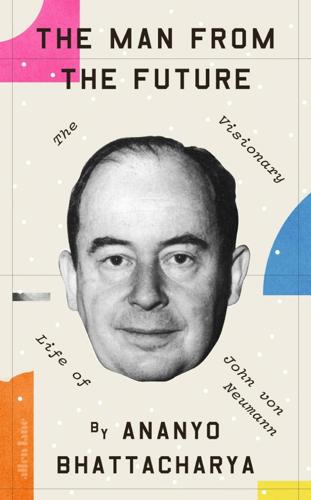
The Man From the Future: The Visionary Life of John Von Neumann
by
Ananyo Bhattacharya
Published 6 Oct 2021
Thomas Schelling and Robert Aumann picked up the prize in 2005 for their work on conflict and cooperation. In 2012, the eighty-nine-year-old Shapley, who advanced cooperative game theory, got the call from the Nobel committee – and told them he ‘never, never in my life took a course in economics’. His co-winner, Alvin Roth, had used the matchmaking algorithm Shapley helped design to pair junior doctors with hospitals, students with schools – and kidney donors with patients. In 2009, Elinor Ostrom became the first woman to win the economics Nobel.75 She had travelled far and wide to apply game theoretic analyses to the governance of the ‘commons’ – resources used by many people that may be depleted by their collective actions.76 Ostrom described how locals invented ways to protect such resources.
…
C. 214 McNamara, Robert 222 Macrae, Norman 103 Manchester, University of 138, 142, 269 Mandelbrot, Benoît 277–8, 282 Manhattan Project xii–xiii, 80–96, 85 assembly of the first implosion device 87–8 cost 80 decision to use bomb 93 detonator 86–7 and ENIAC 109 Explosive Division 86 explosive lenses 84, 85, 86–7 Fat Man 89, 92 Fat Man dropped 95–6 Feynman recruited 82 Groves appointed to lead 80–1 gun projects 81–2, 83 implosion bomb design 82, 83–4, 85, 85–8 initiator 87–8, 90, 91 Jumbo 88–9 Little Boy 82, 865, 88, 92 Little Boy dropped 94–5, 96 location 81 the Martians 1, 9 Oppenheimer appointed to head laboratory 81 origins 80 personnel 80 secrecy lifted 132–3 small-scale test 88 Soviet spies in 92 tamper 87, 91 Target Committee 94 testing approach 84 Theoretical Physics Division 99 Thin Man 82, 85 Trinity test 92, 209 VN joins 82–4 VNs first contribution 83 VNs visits to Los Alamos 84–5, 85 VNs work 82–8 MANIAC I 137, 139 Many Worlds interpretation, the 57–8 Margolus, Norman 245 Mars, terraforming 264 Marxism 14 Mathematical Association of America 77 Mathematical Foundations of Quantum Mechanics (von NeumanNeumann) 41, 43–9, 50, 62 mathematics xii axiomatic method 16, 19–20, 24, 144, 199 consistency unprovable 116–17 debate on the limits of 16, 22 Euclid’s parallel postulate 17–18, 17 foundational crisis 15–25, 111–113, 113–115 Gödel’s first incompleteness theorem 112–167 Gödel’s second incompleteness theorem 116–7 hyperbolic geometry 18, 18 not complete 112–13 set theory 20–5, 26–8, 157 type theory 26–7 VNs contributions to the foundational crisis 22–5 matrix algebra 32 matrix mechanics 30–33, 32, 35, 36–38, 39, 46 Matsumoto, Shigeko 95–6 Mauchly, John W. 106–8, 123, 130, 308–9n53 EDVAC patent dispute 125–6, 127–8 The Use of High Speed Vacuum Tubes for Calculating 108 MAUD report, the 80, 301n23 Maxwell, James Clerk 33 Mayer, Maria Goeppert 137 Maynard Smith, John 180 measurement problem, quantum mechanics 43–5, 57–8, 59, 296n43 Meitner, Lise 78, 301n23 Merkle, Ralph 264 Mermin, David 46, 50, 54 Metropolis, Nicholas 109, 135–6, 136, 137, 139 Michigan, University of 105, 181, 258 Logic of Computers Group 243–4, 258, 265 Milgrom, Paul 177–8 military worth 188, 189, 191 minimax theorem proof 143–8, 154, 169, 176–7, 192 Minority Report (film) 231 Minsky, Marvin 274, 276 Minta/Model gimnázium 7–8, 9 Mises, Ludwig von 152–3 Misner, Charles 57 MIT 107, 128, 130, 175, 185, 242, 244–5, 274 Modernism 154–165, 291n12 molecular biology 62, 230, 268 Mondrian, Piet 154 Monte Carlo 74–5 Monte Carlo bomb simulations 133–8 Moon, colonization of 225–6, 264–8, 268 Moore, Edward F. 263 Moore, Gordon 140 Moore School of Electrical Engineering, University of Pennsylvania 101, 1054–11, 106, 122, 126, 128, 308106 Moore’s law 140 Morgenstern, Oskar xiii, 152–9, 175, 199 contribution to Theory of Games 158–9, 160–1, 165–6169, 171, 173 disillusionment with economics 153–4, 157, 158–9 doctoral thesis 153–4 education 152–3 habilitation thesis 153–4 joins Princeton 155–6 leaves Austria 154–5 marriage 156 travels 153 and VN 154, 155, 156–9 Moskito Island 244, 245, 245–6 multi-player (n-person) games 169–75, 176 multi-player games 169, 176 Munich Agreement 76 Murdoch, Iris 145 Musil, Robert 32 Nagasaki, bombing of 95–6 nanotechnology 268–9 NASA, Santa Clara workshop 264, 265 Nasar, Sylvia 198, 202 Nash, John 151, 177–8, 179, 197–203, 200, 203, 204, 207–8 A Beautiful Mind characterization 198 ‘The Bargaining Problem’ 199, 204 character 198–9 conception of game theory 203 contribution to game theory 199–203 and Einstein 199–200 non-cooperative Pair experiment 207–8 racism 198 relationship with RAND 202 and Shapley 197–8 VNs rejection 199–203 Nash equilibria 201–3 National Academy of Sciences 84 National Cash Register Accounting Machine 79 National Defence Research Committee 77, 79 National Socialism 5 natural selection 180–1, 253–4, 257 nature, randomness in 248, 249 Naturwissenschaften (journal) 52 Nautical Almanac Office, Bath 79 Nazi Germany 93, 78, 203 annexation of Austria 117, 154–5 annexation of the Sudetenland 76 atom bomb project 96–7 decline of science in 63–4 Hitler appointed Chancellor 62–3 resistance movement 51 totalitarian dictatorship 63 Neddermeyer, Seth 82, 83–4 neoliberalism 152 Neumann, John von xi–xiv, 66, 71 ‘A Model of General Economic Equilibrium’ 151 acquaintance with Turing 70, 103 appearance 71–2 applies for commission 73–4 appointed to AEC 212 appointed to BRL’s scientific advisory board 77 approach to giving seminars 41 approach to ordinals 23–4, 24 approach to programming 134–5 arrival in America 50, 65–7 background 1–3 and Barricelli 2547 becomes American citizen 72 begins working for IBM 126 Berlin years 39–41, 40 birth xii, 1 birth of daughter 71 and brain structure 227–8 burial 280 cancer 224, 279–80 cancer diagnosis 274–5 cars 665–76, 283 character 14, 77, 210–11, 281–3 chemical engineering degree 28 chemical engineering studies 25–6 child custody arrangements 141–2 childhood mathematical ability 3–4, 289n6 The Computer and the Brain 275–6 contribution to computing 122–7, 129–130, 131, 139–140, 308n48 contributions to the foundational crisis 165, 22–5, 24, 26–7 contributions to quantum theory 30, 36, 37–9, 41, 43–6, 48–9, 50, 54, 60–1, 61 conversion to Catholicism 7 cynical side 281–2 death xiv, 280 and decision to use bomb 93 defence of Oppenheimer 211–12 Defense in Atomic War 221 divorce from Mariette 75 doctoral exam 28 doctoral thesis 26–8 driving skill, lack of 665–76 economic model 148–9, 151–2 education 3, 4–5, 7–10, 11–13, 14 EDVAC report 121–7 EDVAC patent dispute 125–6, 127–8 and ENIAC 105–6, 109–111, existential threats speculations 283–4 explosives and ballistics work 77, 83 fame 105 family background 2 fascination with war strategy 191–2 first marriage 50, 65 First Draft of a Report on the EDVAC 111, 121–7 first paper 12–13 Fuchs-von Neumann patent 99–100, 109 and Gödel 111, 113, 116–18 graduates from high school 25 health deteriorates 235 and Hilbert 27–8 home life 72, 77 hospitalization 276–7 IAS computer project 127, 128–30, 138–9, 193 and ICBM threat 216, 217–18 implosion bomb design 84, 85, 865–8 impossibility proof 48–9, 50–4 interest in the biological sciences 226–7 interests in computing 79–80, 103–45 invited to Princeton 49–50 joins Manhattan Project 82–4 joins navy 79 and Klára’s return to Hungary 76–7 language skill 3 last book 275 last days 277–80 leaves IAS 277 life in Budapest xi, 1–9, 5, 7, 14 Manhattan Project work 82–8, 85 Marina’s marriage 278–9 Mariette leaves 66, 67, 72 marries Klára 76 Mathematical Foundations of Quantum Mechanics 41, 43–9, 50, 62 mathematical powers 147 and the measurement problem 43–5, 57–8, 296n43 Medal of Freedom 277, 277 Medal for Merit 83 meets Klára 74–5 and Morgenstern 154, 155, 156–9 minimax theorem proof 143–8, 169, 176–7, 192 misanthropy 203 Monte Carlo bomb simulations 133–8 and Nash 199–203 nervous energy 77 on nuclear deterrence 221 obsessions in, 1948 192 obsessive-compulsive disorder 77 ‘On Certain Equations of Economics and a Generalization of Brouwer’s Fixed-Point Theorem’ 148 open-mindedness about quantum mechanics 59–60 operator theory 61–2 opposition to Marxism 14 and origin of atom bomb 78 parties 76 plans to leave IAS 277–8 on power of the atom 102 powers 147 premonitions of war 70–1 at Princeton 65–72, 676, 76 Princeton contract extended 63 proof of the ergodic hypothesis 69 reaction to Bohm 54 relationship with Klára 77, 97 resolves Russell’s paradox 26–8 return to Catholicism 279, 280 road trip with Marina 97–8, 98 Rockefeller Foundation grant 29, 39 salary 65–6, 68 self-reproducing automata 229–30, 232–7, 233, 236 siblings 2, 290n13 Silliman Memorial Lectures 274, 275 talents spotted 11 target votes 94 theory of automata 228–32 Theory of Self-reproducing Automata 226, 231, 236, 237 Trinity test 91–2 Turing’s influence 121–2, 301n22 unification of quantum mechanics 30, 36, 37–9, 43–9 unique gift 12–13 on universal Turing machine 120 at University of Budapest 11–13 at University of Berlin 12, 39–41 view of the Cold War 208–9 vision of future technical possibilities 102–3 visits Europe, 1949 203 visits to Los Alamos 84–5, 85 war work 78–80 work for RAND 190–1, 192–4, 195–6 wartime visit to Britain 79–80 Neumann, Klára Dán von 74, 235 on computers 121 death 280 death of father 77 depression 77, 1387 ENIAC work 132–3, 135–8 family background 75 IAS computer project 129 insecurity 132 marriage to Eckart 280 marries VN 76 meets VN 74–5 Monte Carlo bomb simulations 133–8 parties 76 relationship with VN 77, 97 return to BRL 136 return to Hungary 76–7 second marriage and divorce 75–6 and Theory of Games 158 and VNs last days 278 and VNs vision of future technical possibilities 102–3 Neumann, Lili von 14 Neumann, Margaret von 2 Neumann, Mariette Kövesi von 66, 67, 300n2 arrival in America 50, 65–7 child custody arrangements 141 divorce 75 marriage to VN 50, 65 university studies 65 leaves VN 66, 72 Neumann, Marina, von birth 71 custody arrangements 141–2 on home life 72 marriage 278–9 road trip with VN 97–8, 98 on VNs marriage to Klára 76 and VNs return to Catholicism 279 Neumann, Max von 2, 3, 4, 6–7, 13, 14, 25–6 Neumann, Michael 14, 290n13 neural networks, artificial 226, 246 neuro-anatomy 228 neurons 122, 123, 125, 2298, 273, 275 artificial 125, 226, 276 neutrons, Monte Carlo bomb simulations 133–5, 136–7 New York 50, 188–9, 220 New York Times 110, 127, 135, 175, 177–8, 209 New Zealand 60, 177 Newman, James 219–20 Newman, Max 119 Nobel Prize 8, 60, 61, 63, 177, 178, 197 Noether, Emmy 51, 63–4 non-cooperative game theory 176, 177–8, 201, 203, 204–8 non-zero-sum games 172–5, 176–7, 204–8 Nordheim, Lothar 36, 41 Notestein, Frank W. 132 nuclear deterrence 183, 212–16, 218–21, 223–4 nuclear disarmament 209, 320n63 nuclear fission 77–8, 80, 86, 87, 91, 134–5, 136–7 Nuclear Operations Joint Publication 3–72 223–4 nuclear strategy counterforce deterrence 212–16, 218–21 doctrine of preventive war 208–10 and game theory 182, 204–9, 206, 212–16, 218–21 Massive Retaliation doctrine 210, 215, 221 preventive war 208–10 restraint 221–2 nuclear weapons research programme see Manhattan Project Office of Scientific Research and Development 77 ‘On Certain Equations of Economics and a Generalization of Brouwer’s Fixed-Point Theorem’ (von Neumann) 148 ‘On Computable Numbers, with an Application to the Entscheidungsproblem’ (Turing) 70, 121 On Thermonuclear War (Kahn) 219–20 Oncken, Wilhelm 4 Operation Crossroads 98 operations research 188, 189 operator theory 61–2 Oppenheimer, Robert AEC hearing 211–12 appointed to head Manhattan Project laboratory 81 appoints Kistiakowsky 84 and Bohm 53 communist links 81 innocence 212 ‘Now I am become Death the destroyer of worlds’ 92 and origin of atom bomb 78 recruits VN 82–3 small-scale test 88 stripped of security clearance 81, 212 supports implosion bomb design 82 and Target Committee 94 Trinity test 92 ordinality 23–4, 24 orthogonal polynomials 12–13 Ortvay, Rudolf 6–7, 70–1, 78 Ostrom, Elinor 178, 181 Oxford, University of 245, 269 Pais, Abraham 46 Papert, Seymour 276 Peierls, Rudolf 80, 99 Pennsylvania, University of, Moore School of Electrical Engineering 101, 105–11, 106, 122, 126, 128, 308 Penrose, Lionel 262 Penrose, Roger 262 Pentagon Papers 222 Péter, Rózsa 147 Petersen, Aage 57 Physics Today (journal) 58 Pinochet, Augusto 152 Piskunov, Max 253 Pitts, Walter 122, 123, 226 Planck, Max 29 Plesset, Ernst 216–18 plutonium xiii, 81–2, 84, 85, 86, 302n33 poker 148, 166–8, 168, 302n32 Poland, Nazi invasion of 77, 80 polonium 88, 90, 91 Pólya, George 11–12 Pomerene, James 139 Potsdam conference, 1945 89–90, 92 Pravda (Soviet newspaper) 183 Preliminary Design of an Experimental World-Circling Spaceship (RAND Corporation) 187 preventive war 208–10 Price, George 180 Price Equation, the 180 Princeton University 57, 155, 198 economics department 175 Einstein at 68, 69 extends VNs contract 63 Fine Hall 68 Institute for Advanced Study 68–72, 117–18, 127, 156, 211, 245 invites VN 49–50 Morgenstern joins 155–6 Office of Population Research 132 Turing at 70 VN at 65–6872, 66, 76 VN leaves 277–8 Princeton University Press 158 Prisoner’s Dilemma 181, 204–8, 206, 212, 272 program-controlled computers 119–20 Project Hippo 135 Project PX see ENIAC Project PY 110 Project Y see Manhattan Project: prospect theory 178 protein structure 227 purposive behaviour 227–8 Pythagoras’ theorem 16, 38 quantum computers 58 quantum entanglement 45, 55–7 quantum mechanics xii, 294n19 applications 58–9 boundary with classical physics 45 Copenhagen interpretation 46, 53–5, 54, 58–60, 296n43 critique of the Copenhagen interpretation 46–8 Dirac’s attempt to unify 36–7 dispersive ensembles 48–9 the EPR paradox 55–7 the Heisenberg cut 45 Heisenberg’s formulation 29–33, 32, 34, 36, 38, 46, 296n43 Hilbert and 36 lack of agreement on interpretation 42 ‘Many Worlds’ interpretation 57–8 matrix mechanics 30–33, 32, 35, 36–38, 39, 4630–3, 32, 35, 38 measurement problem 43–5, 57–8, 59, 296n43 nonlocality 55 origins of 29–30 relational interpretation 298n63 Schrödinger’s formulation 30, 33–6, 36, 38 and self-reproducing automata 243–4 and special relativity 55 uncertainty principle 33, 69, 294n11 utility 58–9 VNs impossibility proof 48–9,50–4 VNs unification of 30, 36, 37–9, 43–9 wave function collapse 43–4, 45, 46–8, 53, 53–4, 59 wave mechanics 30, 33–6 wave–particle duality 33–4, 42–3, 52–3 radiation implosion 99–100 RAND Corporation 182, 183–95 analysis of systems 189 break with Douglas Aircraft 187 Computer Science department 193 and computers 192–3 corporate ethos 187 duels studies 194–7 Economics Division 190, 192, 213 Evaluation of Military Worth 189 first report 187 focus 187 foundation 186–7 founding father 183–6 and game theory 188–9, 193–7, 204–9, 212–16, 218–21 and ICBM threat 216–18 JOHNNIAC 193, 194 little wars strategy 222–4 manifesto 188–9 Mathematics Division 213–16 Military Worth section 189, 195 name 186 Nash’s relationship with 202 non-cooperative Pair experiment 206–8 notoriety 183 Physics Division 216, 218–19 Selection and Use of Strategic Bases 214–15 Social Science division 190, 195, 213 VNs work for 190–1, 192–4, 195–6 Randell, Brian 103 randomness, power of 133–4 Rapoch, Andor 75 Rátz, László 11 Raymond, Arthur 186 Reagan, Ronald 152, 267 Real school 8–9, 9 Reed, Harry 106 RepRap 225–6, 235 REPRO starship 264 Reviews of Modern Physics (journal) 54 Richtmyer, Robert 133–54, 135 Riemann, Bernhard 18–19 Riesz, Frigyes 38–9 Rimini, Alberto 59 Robertson, Angela 676 Robertson, Howard Percy (“Bob”) 676 Rockefeller Foundation 29, 39, 50, 68, 153, 220 Romania 13–14 Rosenblatt, Frank 276 Rosenfeld, Léon 78 Roth, Alvin 178 Rovelli, Carlo 62, 298n63 Royal Air Force 188 Royal Navy 79–80 Russell, Bertrand 20–2, 26–7, 210, 219, 320n63 Russell’s paradox 21–2, 26–8 Rust, Bernhard 64 saddle points 146, 147 Samuelson, Paul 175 Santa Barbara, California 98 Santa Clara workshop, NASA 264, 265 Santa Fe 97 Savage, Leonard 146–7 Schelling, Thomas 178, 220–1, 224, 270, 271, 272 Schmidt, Erhard 26 Schrödinger, Erwin 30, 33–6, 42, 43, 45 critique of the Copenhagen interpretation 46–8 What Is Life?
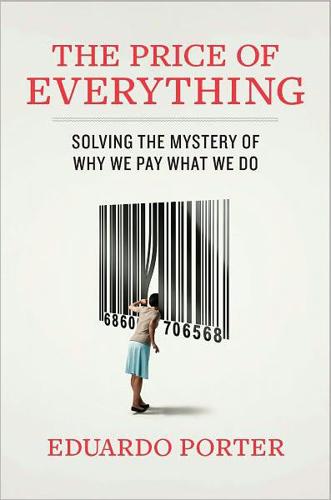
The Price of Everything: And the Hidden Logic of Value
by
Eduardo Porter
Published 4 Jan 2011
The discussion about attitudes toward egg donations draws from the Ethics Committee of the American Society for Reproductive Medicine, “Financial Compensation of Oocyte Donors,” Fertility and Sterility, Vol. 88, No. 2, August 2007, pp. 305-309; David Tuller, “Payment Offers to Egg Donors Prompt Scrutiny,” New York Times, May 10, 2010; United Kingdom Human Fertilization and Embryology Authority, “Egg Donation and Egg Sharing” (at www.hfea.gov.uk/egg-donation-and-egg-sharing.html. , accessed 07/18/2010); and Alvin Roth, op. cit. The discussion about opposition to dwarf tossing in France comes from Alvin Roth, op. cit. Brigitte Bardot’s campaign against Koreans’ taste for dog meat is discussed in William Saletan, “Wok the Dog,” Slate, January 16, 2002. Data on kidney transplants are found in Scientific Registry of Transplant Recipients (at www.ustransplant.org/csr/current/nationalViewer.aspx?
…
Data on tipping patterns in the United States come from Daniel Kahneman, Jack Knetsch, and Richard Thaler, “Fairness as a Constraint on Profit Seeking: Entitlements in the Market,” American Economic Review, Vol. 76, September 1986, pp. 728-741; and Michael Lynn, “Tipping in Restaurants and Around the Globe: An Interdisciplinary Review,” in Morris Altman, ed., Handbook of Contemporary Behavioral Economics, Foundations and Developments (Armonk, N.Y.: M .E. Sharpe Publishers, 2006), pp. 626-643. 173-177 The Price of Repugnance: Discussion on different attitudes about eating horse fillet are drawn from Alvin Roth, “Repugnance as a Constraint on Markets,” Journal of Economic Perspectives, Vol. 21, No. 3, Summer 2007, pp. 37-58; maville.com, Caen et ça region (at www.caen.maville.com/actu/actudet_-Cyril-ouvre-une-boucherie-chevaline-boulevard-Leroy-_loc-822159_actu.htm, accessed 07/18/2010); and Tara Burghart, “Last US Horse Slaughterhouse to Close,” Huffington Post, June 29, 2007 (www.huffingtonpost.com/huff-wires/20070629/horse-slaughter/#, accessed 07/18/2010).
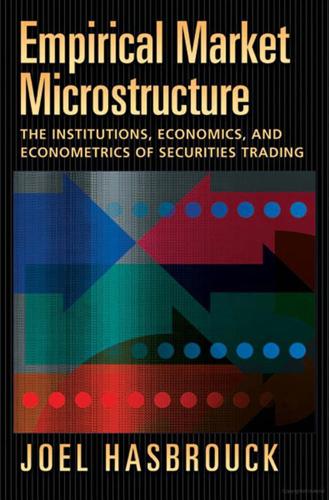
Empirical Market Microstructure: The Institutions, Economics and Econometrics of Securities Trading
by
Joel Hasbrouck
Published 4 Jan 2007
Ronen, Tavy, 1998, Trading structure and overnight information: A natural experiment from the Tel-Aviv Stock Exchange, Journal of Banking and Finance 22, 489–512. Ross, Sheldon M., 1996, Stochastic Processes (John Wiley, New York). Roth, Alvin E., 1995, Bargaining experiments, in John H. Kagel, and Alvin E. Roth, eds., The Handbook of Experimental Economics (Princeton University Press, Princeton, NJ). Roth, Alvin E., and Axel Ockenfels, 2002, Last-minute bidding and the rules for ending second-price auctions: Evidence from eBay and Amazon auctions on the internet, American Economic Review 92, 1093–103. Rubinstein, Ariel, 1982, Perfect equilibrium in a bargaining model, Econometrica 50, 97–110.
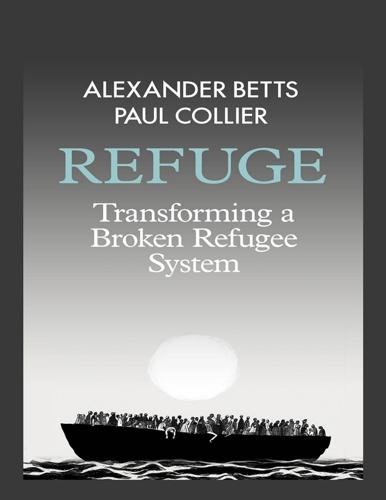
Refuge: Transforming a Broken Refugee System
by
Alexander Betts
and
Paul Collier
Published 29 Mar 2017
The example illustrates how public–private partnership may open avenues for the job creation needed to ensure refugees’ access to autonomy in exile. Another example of a creative initiative relates to the idea of using ‘preference matching’ for refugee resettlement, which was an idea developed by the Nobel-Prize winning economist Alvin Roth.13 It offers a way in which two parties to a transaction can express their preferences regarding outcomes, and then have them ‘matched’ so that they are better off than they otherwise would be. Matching can be defined as ‘an allocation of resources where both parties to the transaction need to agree to the match in order for it to take place’.
…
Judith Kumin, ‘Welcoming Engagement: How Private Sponsorship Can Strengthen Refugee Resettlement in the European Union’ (Washington DC, 13. 14. 15. 16. 17. 18. 2015: MPI), http://www.migrationpolicy.org/research/welcomingengagement-how-private-sponsorship-can-strengthen-refugeeresettlement-european. See, for example, Alvin Roth, ‘The Economics of Matching: Stability and Incentives’, Mathematics of Operations Research, 7/4 (1982): 617–28. Will Jones and Alex Teytelboym, ‘Choice, Preferences and Priorities in a Matching System for Refugees’, Forced Migration Review, 51 (2016): 80–82. This is meant in the sense that it does not deliberately hire staff based on their political or economic training or expertise.
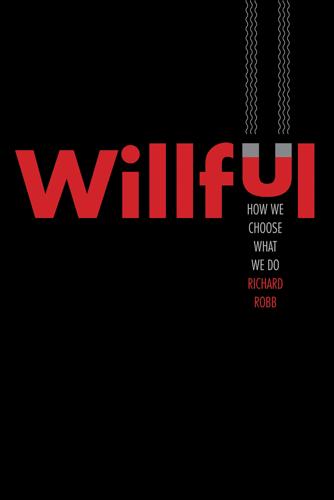
Willful: How We Choose What We Do
by
Richard Robb
Published 12 Nov 2019
Robb, Richard. “Nietzsche and the Economics of Becoming.” Capitalism and Society 4, no. 1 (2009). Ross, Don. “Economic Models of Procrastination.” In The Thief of Time: Philosophical Essays on Procrastination, edited by Chrisoula Andreou and Mark D. White, 28–50. Oxford: Oxford University Press, 2010. Roth, Alvin E., Vesna Prasnikar, Masahiro Okuno-Fujiwara, and Shmuel Zamir. “Bargaining and Market Behavior in Jerusalem, Ljubljana, Pittsburgh and Tokyo: An Experimental Study.” American Economic Review 81, no. 5 (1991): 1068–1095. Russell, Bertrand. The Problems of Philosophy. New York: Henry Holt, 1912.
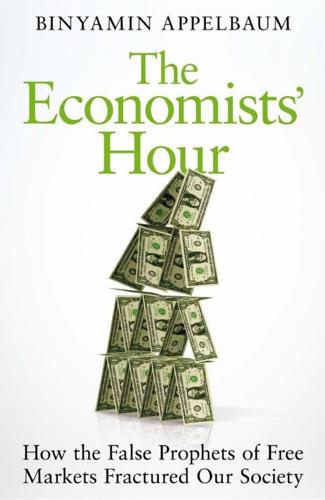
The Economists' Hour: How the False Prophets of Free Markets Fractured Our Society
by
Binyamin Appelbaum
Published 4 Sep 2019
Karl Ritter and Nathalie Rothschild, “Nobel Prize for Economics Goes to France’s Tirole,” Associated Press, October 13, 2014. 100. “OECD Broadband Basket,” June 2017, OECD Broadband Portal. 101. The economist Alvin Roth, perhaps the world’s preeminent designer of markets — for kidneys and students, among other things — says that markets are like wheels: free movement requires an axle. Alvin Roth, Who Gets What and Why (New York: Houghton Mifflin, 2012), 13. Chapter 7. The Value of Life 1. Jean-Baptiste Say, “Author’s Note,” Catechism of Political Economy, 3rd ed. (1815); available in the original French at https://fr.wikisource.org/wiki/Cat%C3%A9chisme_d%E2%80%99%C3%A9conomie_politique/1881/Avertissement. 2.
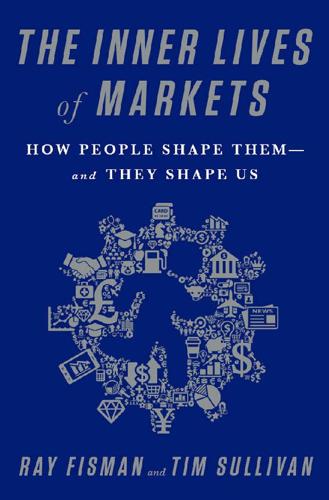
The Inner Lives of Markets: How People Shape Them—And They Shape Us
by
Tim Sullivan
Published 6 Jun 2016
“In the Great Web Bazaar,” The Economist, February 24, 2000, http://www.economist.com/node/285614; Robert Hall, Digital Dealing: How E-Markets Are Transforming the Economy (New York: W. W. Norton, 2002). 10. Recall in Chapter 4 that we looked at how eBay sellers experimented with bundling listings with charitable donations. 11. Economists have come up with a number of explanations for this end-of-auction “sniping.” For example, a paper by Alvin Roth and Axel Ockenfels argues that bidders learn about what an item is worth during the bidding process. The “snipers” wait to see how others value a listing before swooping in at the last moment to put in a slightly higher bid. Alvin E. Roth and Axel Ockenfels, “Last-Minute Bidding and the Rules for Ending Second-Price Auctions: Evidence from eBay and Amazon Auctions on the Internet,” American Economic Review 92, no. 4 (2002): 1093–1103. 12.
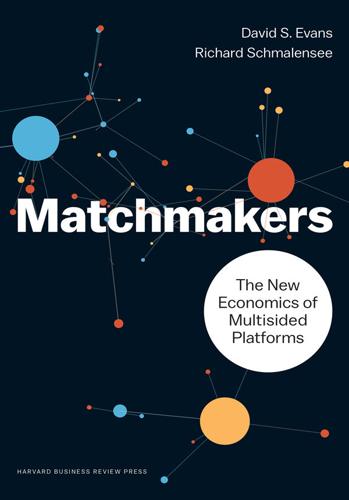
Matchmakers: The New Economics of Multisided Platforms
by
David S. Evans
and
Richard Schmalensee
Published 23 May 2016
Another plausible explanation, however, is that these platforms restrict entry in order to raise the level of quality and prevent a lemons problem. 12. In economist-speak, this is a negative direct network effect. 13. These are positive direct network effects. 14. For a discussion of the role of congestion and the speed of making transactions, see Alvin Roth, Who Gets What and Why (New York: Houghton Mifflin Harcourt, 2015). 15. Eye-tracking studies of how consumers use search engines reveal that both the quality of the consumer experience and the attention paid to advertising varies substantially with the layout and organization of the search results page.
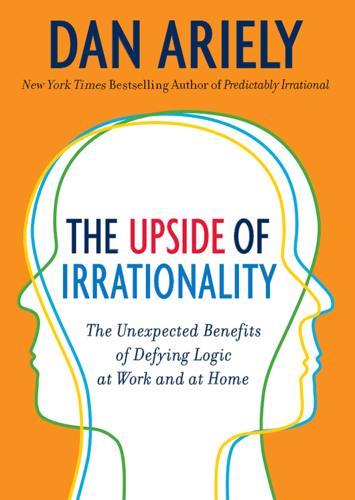
The Upside of Irrationality: The Unexpected Benefits of Defying Logic at Work and at Home
by
Dan Ariely
Published 31 May 2010
Chapter 11: Lessons from Our Irrationalities: Why We Need to Test Everything Additional readings Colin Camerer and Robin Hogarth, “The Effects of Financial Incentives in Experiments: A Review and Capital-Labor-Production Framework,” Journal of Risk and Uncertainty 19, no. 1 (1999): 7–42. Robert Slonim and Alvin Roth, “Learning in High Stakes Ultimatum Games: An Experiment in the Slovak Republic,” Econometrica 66, no. 3 (1998): 569–596. Richard Thaler, “Toward a Positive Theory of Consumer Choice,” Journal of Economic Behavior and Organization 1, no. 1 (1980): 39–60. Index The pagination of this electronic edition does not match the edition from which it was created.
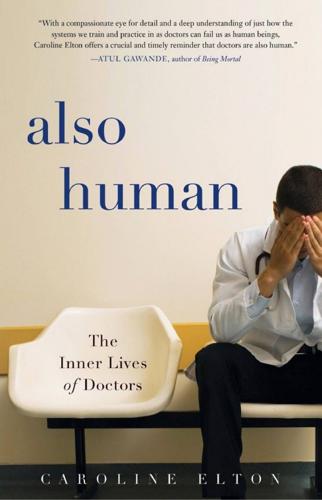
Also Human: The Inner Lives of Doctors
by
Caroline Elton
Published 1 Mar 2018
See race and ethnicity misconduct in UK, 234 Morehouse School of Medicine, selection for, 237–238 Morris, Jenny, 136 mortality of patients, and new doctors, 24–25 mothers, attachment of infants, 51–52 multiple mini interviews (MMI), 245–248, 251–252 National Health Service (NHS) career support of doctors, 4–5 first day of new doctors, 15 training of doctors, 4, 216 unpreparedness of F1s for work, 16–17 National Resident Matching Program (NRMP), 22–23, 191 neonatal ward and neonates, 54 New England Journal of Medicine, 5–6 New Zealand, 33–34, 112–113 obstetrics as choice of specialty, 85 and death, 77–78 and male homosexuality, 100–101 Ofri, Danielle, 57–58 oncology work as choice of specialty, 85 and personal background, 71, 73–74, 75 orphans, 51 Osler, William, 58, 156 “The Other Side of the Speculum” (Thoma), 108 palliative medicine, impact on patients, 70 parents attachment to, 51–52 feelings for children, 259–260 and siblings’ differences, 173 part-time work, for women, 161, 164, 169 patients bias of doctors, 177–178 and BME doctors, 182–183 curtains in hospitals, 41–42 doctors as, 124–126, 128–131 emotions in patient relationship, 59, 257–262 empathy towards, 60–61 impairments, 134–135 in intimate examinations, 115–118 outcomes, 168, 257–262 relationships with doctors, 110, 111, 235, 258–259 sexual attraction, 110, 112–114 pay gap, for women, 161–162 pediatric resuscitation (failed), impact on doctors, 221–222 pelvic examinations, and sexual attraction, 106–109 personal life and background in specialty choice, 92–94, 99–101 and career choice, 71–78, 82–84, 98–100, 112, 243–245 and emotions, 72–76 and exiting medicine, 204, 209 impact on work, 120–124, 148–149, 167–168 personal statements, for selection, 241–242 personality, and specialty choice, 85–86 Plato, 82–83 pregnancies hostility towards in surgery, 148, 153, 155 work with pregnant mothers and babies, 120–123 prior experience, in choice of specialty, 88–90 Prober, Charles, 190 professional misconduct in UK, 234 psychiatry, and family life and medical studies, 82–83 psychological demands and needs in medical work, 257–259, 260–264 psychology and psychotherapy family life and medical studies, 83–84 service for doctors, 184–185 transference and countertransference, 102–105 Public Privates (Kapsalis), 106 “Quitting Medicine” (Crichton), 224 race and ethnicity attitude changes, 176 and belonging, 181–183, 196–198 challenges for ethnic doctors, 196–198, 199 data collection and use, 190–191 differential attainment, 185–192, 198–199 grades and access to medical school, 185–187, 189–191 misreading of students, 171–173, 192–194 “racial legacy” in medicine, 194–196 receiving end of, 179–181 reforms in schools, 199–200 relationship with patients, 182–183 stereotypes and bias, 171, 173–175, 177–178, 180–181, 183, 198 support of family, 184 unconscious bias, 176–178, 243 misreading due to ethnicity, 171–173 race and stereotypes, 172–173, 181, 183–185 referrals to specialists, stress towards, 11 repression, as defense mechanism, 57 Republic (Plato), 82–83 residencies (USA) depression in, 32 and empathy, 58 job offers and placement, 21–23 return to career and specialty, 165–167, 218, 220–221 revues, stereotypes in, 175 road traffic accidents, and hours of work, 35 role changing, 226 See also exiting medicine role models, in choice of specialty, 87–88 Rorschach inkblot test, 86 rota, and sleep and planning, 36–37 Roth, Alvin E., 22 Royal College of Physicians, working conditions survey, 6–7 safety of patients and workloads, 7 Schwartz, Kenneth, 60–61 Schwartz Center Rounds, 61–62 selection for medical school and completion, 232–233 and difficulties in school and work, 233–236 dishonesty and lies, 249–250 emotional resilience, 250–253 ethical decisions, 246 “failure to fail” problem, 233, 235–236 health assessment, 251 and health issues, 229–230, 253–255 interviews, 242–246 motivations for, 244–245 multiple mini interviews (MMI), 245–248, 251–252 multiple sample, 245–247 personal statements, 241–242 tests and achievements, 236–239 selection of specialty, 83–86, 95–97 separation and loss, impact, 51 sexual offences by doctors, 115–116, 118 sexual orientation, and choice of specialty, 100–101 sexual attraction and desire advice and guidelines, 112–114, 117 boundary violations, 113–117 between doctor and patient, 110, 112–114 in intimate examinations, 102, 105–110, 116–117 in work relationships, 105, 111–113, 117 Shah, Jyoti, 155 Shapley, Lloyd S., 22 Shirley (patient), in goldfish bowl sessions, 67, 68 Shooter, Mike, 82 sickness doctors as patients, 124–126, 128–129 and doctors’ careers, 126–128 as motivation to be a doctor, 244 from stress at work, 78–79 Sinclair, Simon, 57 Situational Judgement Test (SJT), 17–20, 27–28 skills and qualities for medicine, 241–242 sleep, 35–37 social mobility in medicine, 240 Society for General Internal Medicine, on empathy, 59 specialty choice in medicine background of students, 92–94, 99–101 dissatisfaction with, 85, 97 and elective period, 89 influences on, 87–91 and personality, 85–86 selection by doctors and students, 83–86, 95–97 and sexual orientation, 100–101 and student debt, 91–92 timing of decision, 92–95 in UK, 84–85, 88, 90–92, 95, 159 in US, 84–85, 88, 91, 92 women’s choices, 157–161 work and study required, 163 Stanford University, stereotypes study, 178–180 Steele, C.
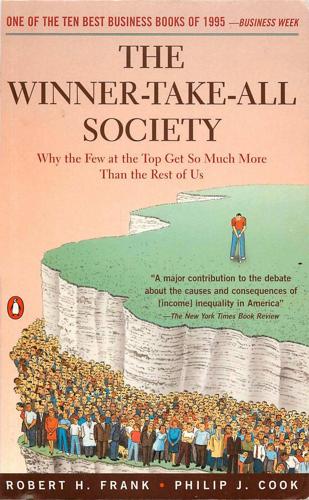
The Winner-Take-All Society: Why the Few at the Top Get So Much More Than the Rest of Us
by
Robert H. Frank, Philip J. Cook
Published 2 May 2011
"Authority, Control and the Distribution of Earnings." Bell Journal of --- Economics 1 3 (October 1982): 3 1 1-23. 258 Bibliography . "Prizes and Incentives in Elimination Tournaments." American Eco nomic Review 76 (September 1986): 701-16. ---. "The Market for Lawyers." Journal 0/ Law and Economics 35 (Octo --- ber 1992): 2 15-46. Roth, Alvin E., and Marilda Sotomayor. Two-Sided Matching: A Study in Game-Theoretic Modeling and Analysis. Econometric Society Monograph Series. Cambridge, England: Cambridge University Press, 1990. Ryan, Joan. "Too Much, Too Young." San Francisco Examiner, July 12, 1992, pp. C 1 , C6 , C7. Sandomir, Richard.
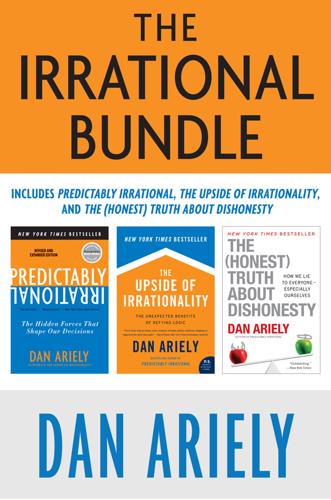
The Irrational Bundle
by
Dan Ariely
Published 3 Apr 2013
The hallmark of an Ariely experiment is that it uses an innovative experimental design to make an unusual point. His work covers a wide range of factors that affect human decision-making, from the usual suspects, inattention and confusion and myopia, to less studied issues like pain and lust.” —Alvin Roth, Professor of Economics and Business Administration, Harvard University “Dan is full of passion for life in general, which is also apparent in his writing and research. Dan’s research is very broad, covering many aspects and implications for the new field of behavioral economics. This includes the psychology of consumers, employees, and investors, crossing topics from dating to dishonesty.
…
Chapter 11: Lessons from Our Irrationalities: Why We Need to Test Everything Additional readings Colin Camerer and Robin Hogarth, “The Effects of Financial Incentives in Experiments: A Review and Capital-Labor-Production Framework,” Journal of Risk and Uncertainty 19, no. 1 (1999): 7–42. Robert Slonim and Alvin Roth, “Learning in High Stakes Ultimatum Games: An Experiment in the Slovak Republic,” Econometrica 66, no. 3 (1998): 569–596. Richard Thaler, “Toward a Positive Theory of Consumer Choice,” Journal of Economic Behavior and Organization 1, no. 1 (1980): 39–60. Index The pagination of this electronic edition does not match the edition from which it was created.
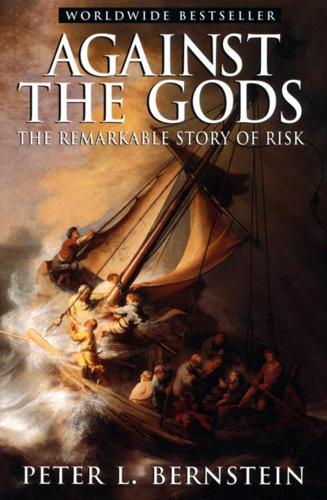
Against the Gods: The Remarkable Story of Risk
by
Peter L. Bernstein
Published 23 Aug 1996
De Moivre first conceived of the bell curve by writing equations on a piece of paper, not, like Quetelet, by measuring the dimensions of soldiers. But Galton conceived of regression to the mean-a powerful concept that makes the bell curve operational in many instances-by studying sweetpeas and generational change in human beings; he came up with the theory after looking at the facts. Alvin Roth, an expert on experimental economics, has observed that Nicholas Bernoulli conducted the first known psychological experiment more than 250 years ago: he proposed the coin-tossing game between Peter and Paul that guided his uncle Daniel to the discovery of utility.26 Experiments conducted by von Neumann and Morgenstern led them to conclude that the results "are not so good as might be hoped, but their general direction is correct."'-' The progression from experiment to theory has a distinguished and respectable history.
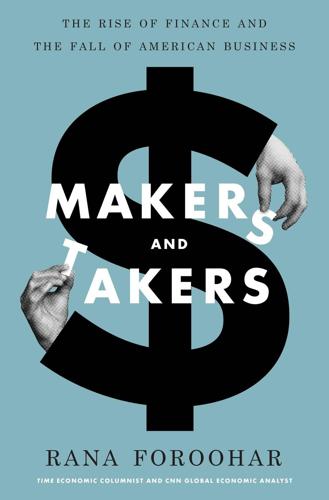
Makers and Takers: The Rise of Finance and the Fall of American Business
by
Rana Foroohar
Published 16 May 2016
Princeton, NJ: Princeton University Press, 2010. Reich, Robert B. Supercapitalism: The Transformation of Business, Democracy, and Everyday Life. New York: Alfred A. Knopf, 2007. Reinhart, Carmen M., and Kenneth S. Rogoff. This Time Is Different: Eight Centuries of Financial Folly. Princeton, NJ: Princeton University Press, 2009. Roth, Alvin E. Who Gets What—and Why: The New Economics of Matchmaking and Market Design. Boston: Houghton Mifflin Harcourt, 2015. Rothkopf, David. Power, Inc.: The Epic Rivalry Between Big Business and Government—and the Reckoning That Lies Ahead. New York: Farrar, Straus and Giroux, 2012. Saval, Nikil.

Model Thinker: What You Need to Know to Make Data Work for You
by
Scott E. Page
Published 27 Nov 2018
“Self-Experimentation as a Source of New Ideas: Ten Examples About Sleep, Mood, Health, and Weight.” Behavioral and Brain Sciences 27, no. 2: 227–262 Romer, Paul. 1986. “Increasing Returns and Long-Run Growth.” Journal of Political Economy 94: 1002–1037. Rosen, Sherwin. 1981. “The Economics of Superstars.” American Economic Review 71: 845–858. Roth, Alvin, and Ido Erev. 1995. “Learning in Extensive Form Games: Experimental Data and Simple Dynamic Models in the Intermediate Term.” Games and Economics Behavior 8: 164–212. Russakoff, Dale. 2015. The Prize: Who’s in Charge of America’s Schools? Boston: Houghton Mifflin Harcourt. Rust, Jon. 1987. “Optimal Replacement of GMC Bus Engines: An Empirical Model of Harold Zurcher.”

WTF?: What's the Future and Why It's Up to Us
by
Tim O'Reilly
Published 9 Oct 2017
., 172–73 and government technology, 187–89 improving outcomes, 175–76 of labor, 190–98 reputation systems in design of online platforms, 181–90 role of sensors, 176–77 and surveillance data, 177–81 value of, 181–90 and workers’ continuous partial employment, 190–98 regulatory capture, 187–88 REI, 244 Reinventing Discovery (Nielsen), 43 Remix, 140 repairs vs. sealed hardware, 337–38 reputation systems, 181–90 Resnick, Paul, 182 Reuther, Walter, 357 rhyming patterns, 5, 8, 13 Ries, Eric, 186 right to work laws, 262–63 Rilke, Rainer Maria, 353 Rinaudo, Keller, 370, 372 Rise and Fall of American Growth (Gordon), 243 Rise of the Robots, The (Ford), 269 Robbins, Jesse, 121 Roberts, Bruce, 285–88 Robinson, David, 130 Robinson, Kim Stanley, 96 robots and robotics competitive advantage of human touch, 311, 315, 330–31 fears about, ix, 300 filling the gap of not enough workers, 310 and jobs, xx–xxi and laser eye surgery, xvii–xviii and people, at Amazon, 95 the Robot Lawyer, 332 robot tax proposal, 307 Rolf, David, 196, 262 Roman empire, xix Romer, Paul, 249 Rosencrantz & Guildenstern Are Dead (Stoppard), xii Rossman, John, 117 Roth, Alvin E., 98 Rothman, Simon, 196 Rushkoff, Douglas, 251 Rwanda, 370 Safari service for ebooks, 50, 344 Sanders, Bernie, 255 Saudi Arabia, 305–6 scenario planning, 358–67 Scheifler, Bob, 16 Schlossberg, Edwin, 3 Schmidt, Eric, 126, 129, 137 Schneier, Bruce, 177 Schrage, Michael, xiv, 58 Schulman, Andrew, 10 Schumpeterian profits, 296 Schumpeterian waste, 277–78 Schwartz, Peter, 359 Science and Sanity (Korzybski), 20 Scoble, Robert, 39 Search, The (Battelle), 161 search engine optimization, 160–61 search engines, 39, 92, 157–59, 207, 288.
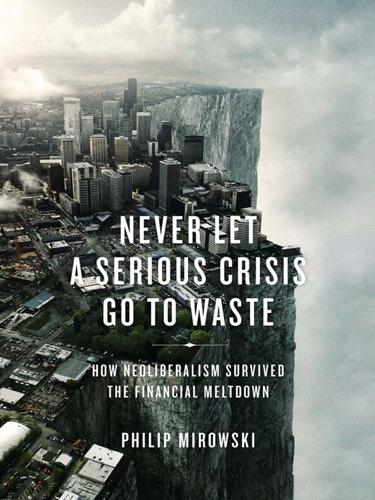
Never Let a Serious Crisis Go to Waste: How Neoliberalism Survived the Financial Meltdown
by
Philip Mirowski
Published 24 Jun 2013
Ausubel and Cramton (“No Substitute for the ‘P’-Word in Financial Rescue,” p. 1) repeat the “suitcase approach” charge. 137 “Complicated Reverse Auction May Aid in Bailout,” NPR, October 10, 2008. 138 Ausubel and Cramton, “A Troubled Asset Reverse Auction,” p. 10. 139 And, indeed, the studies that Ausubel and Cramton draw upon to get their 97 percent figure (Kagel and Levin, “Implementing Efficient Multi-Object Auction Institutions”) provided experimental treatments of private value auctions. 140 Matthew Philips, “Gaming the Financial System,” Newsweek, November 18, 2008, available at www.thedailybeast.com/newsweek/2008/11/17/gaming-the-financial-system.html. 141 Lawrence Ausubel and Peter Cramton, “Auction Design for the Rescue Plan,” presentation dated October 5, 2008, available at www.cramton.umd.edu/papers2005-2009/ausubel-cramton-auction-for-rescue-plan-slides.pdf (accessed March 6, 2012). 142 Nik-Khah, “A Tale of Two Auctions.” 143 Cramton, “Auctioning the Digital Dividend,” p. 1. 144 “The Credit Crisis and Market Design,” Alvin Roth’s Market Design Blog, January 3, 2009, at http://marketdesigner.blogspot.com/2009/01/credit-crisis-and-market-design.html. 145 Cramton, “Market Design,” p. 2. 146 Session on “Research Funding for Economists.” See www.etnpconferences.net/sea/seaarchive/sea2011/User/Program.php?TimeSlot=4#Session11. 147 Prasch, “After the Crash of 2008,” p. 161. 148 Sorkin, Too Big to Fail, pp. 227–29; Calomiris and Wallison, “Blame Fannie Mae and Congress for the Credit Mess.” 149 Krugman, “Fannie, Freddie and You.” 150 White, “The Federal Reserve System’s Influence on Research in Monetary Economics”; Wallison, see all; Congleton, “On the Political Economy of the Financial Crisis and Bailout 2008–9”; Calabria, “Fannie, Freddie and the Subprime Mortgage Market”; Pinto, “ACORN and the Housing Bubble”; Paybarah, “Bloomberg: Plain and Simple.” 151 Nocera, “The Big Lie.” 152 For the best examples, consult Engel and McCoy, The Subprime Virus; Muolo and Padilla, Chain of Blame; Fligstein and Goldstein, “A Long Strange Trip”; Avery and Brevoort, “The Subprime Crisis”; Madrick and Partnoy, “Did Fannie Cause the Disaster?”